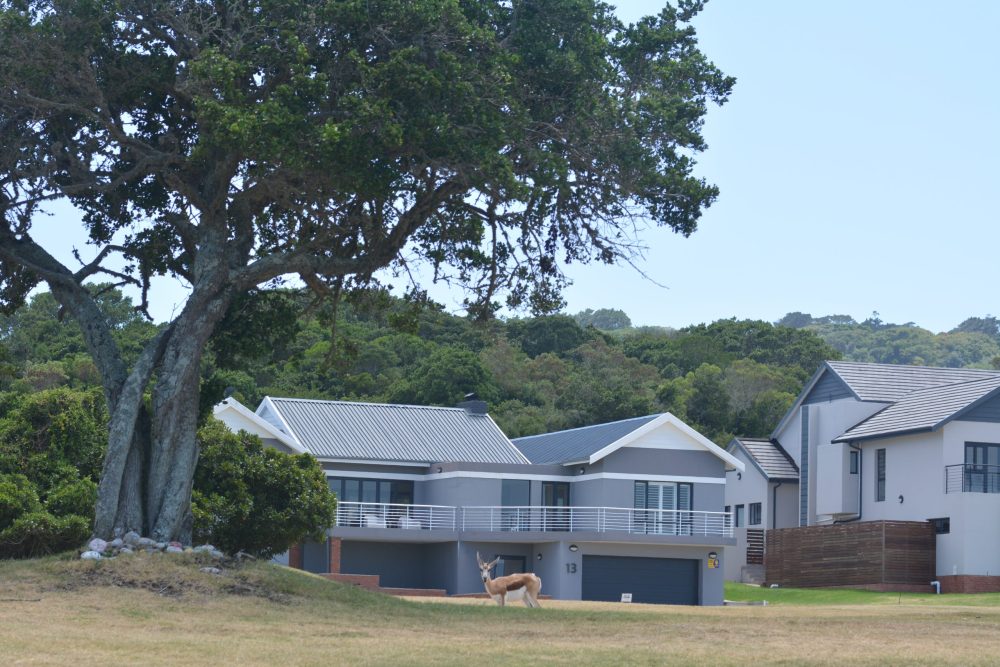A left turn from Seaview into Heron Road provides a vantage point from where rooftops of luxury homes peeking through pockets of greenery can be seen.
The slight downhill that follows leads to the gates of the Sardinia Bay Golf & Wildlife Estate. This upmarket residential estate in Gqeberha – five minutes’ drive from suburbia – is situated within a dense forest of milkwood trees.
If you’re not familiar with this species of flora, you may be forgiven for picturing a tall tree with wide extended branches.
The milkwood, however, has slightly different features to the textbook description of “green-leafed giants” – they are in fact characterised by their compact, bush-like appearance and low-hanging branches.
Milkwoods are part of the natural coastal forest landscape and, although not endangered, are protected under South African law. Cutting down or damaging one without a licence will land a tree feller in trouble in terms of the National Forest Act of 1998.
According to resident “botanist” Jane Robertson, not even the soil under milkwoods may be impacted as “they do well when the ecosystem that they have established is not disturbed”.
The umbrella-shaped thicket, found in abundance on the Sardinia Bay estate, gives residents natural privacy from the road and neighbouring homes as well as protection from hostile coastal winds.
“A few years ago, when winds of 109km/h were recorded in PE, we watched as the milkwoods next to our house swayed and moved about in the wind, but not a single branch was broken. We were amazed!” recalls Jane.

Milkwoods also serve as excellent firebreaks.
“They are remarkably fire-resistant because of the sap that gives them the milkwood name. So having them near our house during those dreadful fires a few years ago gave us some peace of mind as well.”
Despite an array of wildlife that roams the expanse of the estate, the milkwoods remain intact and off the animals’ grazing wish list due to the unpalatable milky substance found in its leaves and bark.
Not every inch of the milkwood is out of bounds though. Its juicy grape-like fruits attract bees, providing nourishment for the estate’s hives of honey producers.
These slow-growing trees require more than just patience but also ample space. Here’s Jane’s tips for those looking to establish a milkwood forest for enjoyment by the next generation:
• Buy saplings from a nursery or strike trees from seeds;
• Seeds should be sown in the summer in a soil mixture of sand and loam in a seed tray and kept warm and wet for four to seven weeks for germination;
• Although adaptable to various soil types, milkwoods prefer medium, well-drained soil and require regular, deep watering; and
• They prefer to grow in a copse (small group) so, if space allows, it’s wise to plant several trees together.
